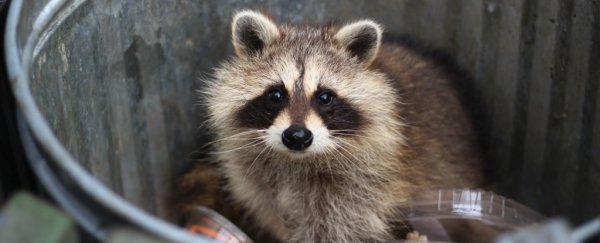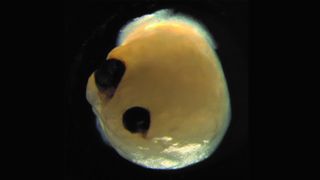Thursday, August 26
Cats & Ancient Egypt
“Though it is hard to say the Egyptians thought one thing or another, since so much change happened across their 3,000+ years of history, the ancient Egyptians, in general, did not worship animals,” says Julia Troche, an Egyptologist, assistant professor of history at Missouri State University, and author of Death, Power, and Apotheosis in Ancient Egypt: The Old and Middle Kingdoms. “Rather, [they] saw animals as representations of divine aspects of their gods.”
Whether or not they were worshiped as deities, cats were an integral part of ancient Egyptian life. And, based on mummified cats discovered in tombs alongside humans, they carried an important role in the afterlife, as well.
Cats Provided Companionship and Pest Control
For most of the civilization’s history, ancient Egyptians saw cats as mutually beneficial companions, according to Troche. “Cats might come inside when it was hot, and they in turn would chase away dangerous animals, such as snakes—many of which were venomous—and scorpions,” she explains.
Some of what we know about the function of cats in ancient Egyptian society comes from scenes of everyday life depicted in paintings on the walls of tombs. “In tombs scenes, cats are shown laying or sitting below chairs, chasing birds and playing,” Troche says. “In some mortuary texts, they are shown with a dagger, cutting through Apopis: the snake deity who threatens Ra (the sun) at night in the Underworld.” READ MORE
What We Are

“Meditate often on the interconnectedness and mutual interdependence of all things in the universe,” the aging Marcus Aurelius instructed.
“Any live mind today is of the very same stuff as Plato’s & Euripides,” the young Virginia Woolf meditated in her diary two millennia later. “It is this common mind that binds the whole world together; & all the world is mind.”
Two years earlier, in the first year of the twentieth century and the final year of his life, the uncommonly minded Canadian psychiatrist Maurice Bucke had formalized this notion in his visionary, controversial book Cosmic Consciousness: A Study in the Evolution of the Human Mind, which influenced generations of thinkers ranging from Albert Einstein to Abraham Maslow to Steve Jobs.
Bucke himself had been greatly influenced by, then befriended and in turn influenced, Walt Whitman — a poet enraptured by how science illuminates the interconnectedness of life, who contemplated the strangest and most paradoxical byproduct of consciousness “lifted out from all else, calm, like the stars, shining eternal”: our sense of self.
Science was young then — it still is — and the world was old, and the mind was old, its dwelling-place practically unchanged since the cranium of early Homo sapiens began accommodating a brain comparable to our own some three hundred thousand years ago.
Wednesday, August 25
LIVID
According to the internet,
livid
means Furiously angry...
I have been vacationing at Myrtle Beach, SC all week and have been listening to FOX NEWS in the mornings before going out to my lounge chair and umbrella on the beach... and, each day I get angrier and angrier at PRESIDENT JOE BIDEN and his INCOMPETENT LEADERSHIP as it pertains to withdrawing Americans and our Allies and our Friends out of Afghanistan... It appears this fools did every ASS BACKWARDS...
First - he withdrawals the military and gives up the military airport and then decides to remove the Americans... and, realizes he needs to send the military back in to get the Americans out. In the meantime, the TALIBAN seize millions and millions of dollars worth of US military assets some of which are highly classified like the BLACKHAWK helicopters...
And, if this isn't bad enough, he bows down to the TALIBAN and lets them tell US what the hell we are going to do or not going to do... NOBODY in the history of this country has ever order our PRESIDENT around like the Taliban are ordering Biden.
Second... mainstream media is not bothered at all by his incompetence even after the British PARLIMENT refused to support any future military actions by the USA as long as Biden was our President... AND... that has never happened before either... not with one of our CLOSEST ALLIES...
Third. our illustrious President REFUSES to take questions by the press after making public statements... Who the hell is he trying to hide from...
WAKE UP AMERICA...
Sexually Frustrated Sea Snakes
In a new study, the diver and another researcher analyzed 158 of these interactions with olive sea snakes (Aipysurus laevis) over several years in the Great Barrier Reef and found that interactions were more common during the reptiles' mating season.
"Males are very aroused and active while looking for 'girlfriends,'" lead author Rick Shine, an evolutionary biologist and reptile expert at Macquarie University in Australia, told Live Science.
Humaniod Robot Has Moves
The robotics company previously has shown how its robot dogs can go down stairs and open doors. Some police departments have begun using the robot dogs, typically called Spot, to help patrol. And Atlas, which the company dubbed "the world's most dynamic humanoid," showed in an earlier video how the robot can jog and jump over a log.
In a new video, Atlas now can do parkour – a sport of moving through obstacles – jumping and running along uneven platforms. Then, two humanoid robots do synchronized movements including turning, spinning and two flips, mirroring each other moves.
Having the robots perform parkour sequences including running along a balance beam, jumping and doing flips helps in the development of a robot capable of multiple tasks, “a go-anywhere, do-anything robot of the future," said Scott Kuindersma, leader of Boston Dynamics' Atlas team, in a blog post accompanying the new videos.
"The work that we are doing now is really just foundation building," he said. "We are building the core capabilities that we think any useful robot will need and in doing so we are really just defining the next set of challenges that we are going to be working on over the next two to five years." READ MORE
Animals Growing Bigger

Human activity has shrunk the size of wild animals the world over, and yet recent research has found many mammals living near cities have become steadily larger, both in length and in weight.
The findings are unexpected. Sprawling urban environments, with their vast swathes of sun-soaked cement, can grow much hotter than natural habitats, and warmer temperatures usually benefit mammals that have a smaller, more energy efficient stature – a principle of biology known as Bergmann's rule.
As the world grows warmer, some scientists have worried that mammals living near cities are doomed to grow smaller, possibly reducing their fitness as a species and, no doubt, the fitness of their predators, too.
But even with climate change, that might not happen. As it turns out, there's another factor in determining a mammal's size that might rival or even exceed temperature, and that is food.
In and around cities with dense populations, where high-calorie human scraps are more widely available and predators are fewer and farther in between, new research discovered that most of the mammal species studied – such as coyotes and raccoons – appear to be growing in size, not shrinking.
That extra bulk has been noted before by both scientists and members of the public. Yet the reason or reasons why have rarely been explored. READ MORE
Tuesday, August 24
Mini Brains Grow Eyes

Scientists recently grew mini brains with their own sets of "eyes," according to a new study.
Organoids are miniature versions of organs that scientists can grow in the lab from stem cells, or cells that can mature into any type of cell in the body. Previously, scientists have developed tiny beating hearts and tear ducts that could cry like humans do. Scientists have even grown mini brains that produce brain waves like those of preterm babies.
Now, a group of scientists has grown mini brains that have something their real counterparts do not: a set of eye-like structures called "optic cups" that give rise to the retina — the tissue that sits in the back of the eye and contains light-sensing cells, according to a statement.
In the human body, the retina sends signals to the brain via the optic nerve, allowing us to see images. "In the mammalian brain, nerve fibers of retinal ganglion cells reach out to connect with their brain targets, an aspect that has never before been shown in an in vitro system," senior author Jay Gopalakrishnan, a researcher at University Hospital Düsseldorf, said in the statement. (Ganglion cells are neurons located in the inner surface of the retina that communicate directly with the brain.)
Previously, researchers had grown optic cups individually in labs, but this is the first study that integrated optic cups into brain organoids, according to the statement.
Gopalakrishnan and his team adapted a technique they previously developed for turning stem cells into neural tissue in order to create the mini brains with optic cups. Once the stem cells had developed into mini brains, the organoids formed optic cups. The optic cups appeared as early as 30 days and matured within 50 days, a timeframe similar to how the retina develops in a human embryo, according to the statement.READ MORE











